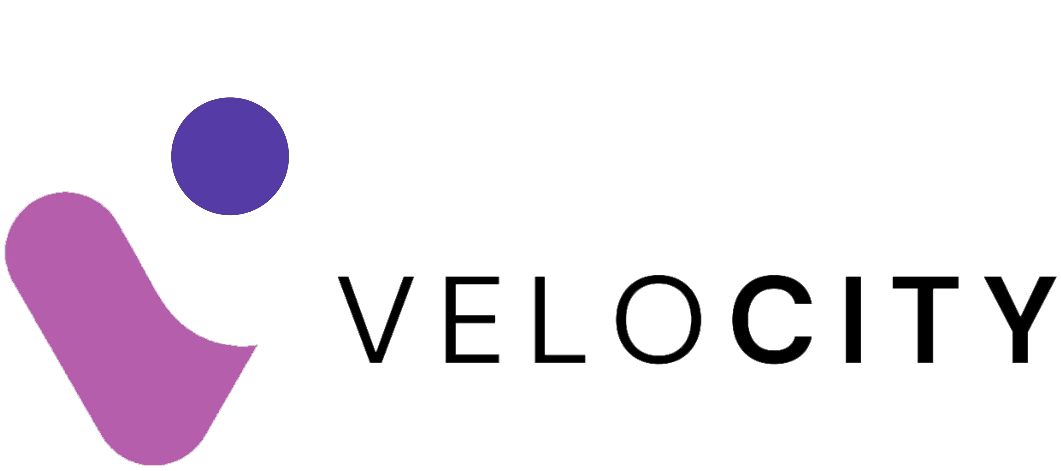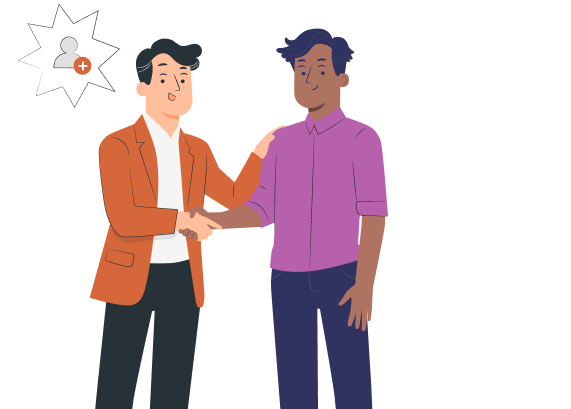Services List
Businesses today face a crucial decision when allocating their marketing budgets: should they invest in direct outreach or rely on paid advertising? Both approaches aim to generate leads, boost brand awareness, and increase revenue, but they differ in methodology, cost structure, and long-term effectiveness. While paid ads offer quick visibility, they require ongoing investment to maintain performance. Direct outreach, on the other hand, provides a cost-effective, personalised approach that nurtures long-term relationships with high-value prospects.
This article will compare direct outreach and paid advertising in terms of ROI, cost-effectiveness, lead quality, scalability, and sustainability, helping you determine which strategy best suits your business growth objectives.
%20(1)-Feb-07-2025-02-03-32-0343-PM.jpg?width=1750&height=875&name=Feature%20images%20velocity_%202500%20x%201500%20(1750%20x%20875%20px)%20(1)-Feb-07-2025-02-03-32-0343-PM.jpg)
Covered in this article
Understanding Direct Outreach
What is Paid Advertising?
Comparing Direct Outreach and Paid Ads: Which Delivers Better ROI?
Final Verdict: Which Strategy Delivers Better ROI?
Conclusion
FAQs
Understanding Direct Outreach
Direct outreach involves proactively contacting potential customers through email, LinkedIn, phone calls, or personalised messages. Instead of waiting for leads to find your business, direct outreach allows you to target and engage decision-makers who match your ideal customer profile.
Key Benefits of Direct Outreach
✅ Cost-effective – No ad spend; relies on strategy and effort.
✅ Highly personalised – Tailored messaging increases engagement.
✅ Control over targeting – Hand-pick prospects instead of relying on algorithms.
✅ Stronger relationships – Enables direct conversations and trust-building.
✅ Better lead qualification – Targets high-intent prospects rather than broad audiences.
How Direct Outreach Works
- Identify ideal prospects based on firmographics (industry, company size, job role).
- Craft personalised outreach messages that address specific pain points.
- Engage via multiple channels (email, LinkedIn, calls) to increase touchpoints.
- Nurture leads through follow-ups to build trust and increase conversion chances.
- Convert leads into paying customers with strategic, well-timed outreach.
What is Paid Advertising?
Paid advertising involves spending money on digital platforms such as Google Ads, Facebook Ads, LinkedIn Ads, and other PPC (pay-per-click) campaigns. It is designed to attract prospects through targeted advertisements, bringing them into a sales funnel.
Key Benefits of Paid Ads
✅ Immediate visibility – Generates quick traffic and impressions.
✅ Scalability – Can reach a broad audience instantly.
✅ Automated targeting – Uses AI-driven algorithms to find potential leads.
✅ Brand awareness – Helps businesses stay top-of-mind for potential customers.
How Paid Advertising Works
- Define target audience based on demographics, interests, and behaviour.
- Create ad campaigns using text, images, videos, or banners.
- Set a budget and bid strategy (CPC, CPM, or CPA).
- Run and monitor ads, making optimisations based on performance.
- Drive traffic to a landing page and convert visitors into leads or customers.
Read about why direct outreach is perfect for your business
Comparing Direct Outreach and Paid Ads: Which Delivers Better ROI?
1. Cost-Effectiveness
🔹 Direct Outreach:
- Requires minimal financial investment, as it relies on manual effort, strategy, and outreach tools.
- The main costs involve email automation tools, CRM software, and outreach specialists.
- No ongoing ad spend; outreach efforts compound over time.
🔹 Paid Ads:
- Requires continuous investment—once you stop spending, the traffic stops.
- Costs vary depending on competition, industry, and platform (e.g., Google Ads can be expensive for high-demand keywords).
- Ad fatigue leads to diminishing returns, requiring constant budget increases and ad refreshes.
✅ Winner: Direct Outreach – More cost-effective in the long run, with sustainable lead generation.
2. Lead Quality and Conversion Rates
🔹 Direct Outreach:
- Targets specific decision-makers who match the ideal customer profile.
- Allows personalisation, making outreach more relevant and effective.
- Prospects are pre-qualified, leading to higher conversion rates.
🔹 Paid Ads:
- Attracts a mix of interested and unqualified leads, requiring further nurturing.
- Ad platforms use algorithmic targeting, which may not always identify the best-fit customers.
- Higher likelihood of unqualified traffic, leading to wasted ad spend.
✅ Winner: Direct Outreach – Ensures better lead quality and higher conversion rates.
3. Scalability and Reach
🔹 Direct Outreach:
- Can be scaled with automation and outreach tools but still requires human effort.
- Limited by manual prospecting and personalisation efforts.
- Works best for targeted, high-value prospecting rather than mass outreach.
🔹 Paid Ads:
- Instantly scalable—just increase ad spend to reach more people.
- Can generate thousands of impressions quickly across different platforms.
- Ideal for broad audience reach but at a high cost.
✅ Winner: Paid Ads – Easier to scale at a large scale, but at a higher cost.
4. Long-Term Sustainability
🔹 Direct Outreach:
- Leads to long-term relationship-building, with cumulative benefits over time.
- Email lists and connections can be nurtured and reused without additional costs.
- Once a strong process is in place, it continues delivering leads with minimal investment.
🔹 Paid Ads:
- Short-term traffic boost, but leads stop flowing the moment ad budgets run out.
- Requires constant optimisation and budget increases to maintain performance.
- High reliance on ad platforms and algorithm changes, making it unpredictable.
✅ Winner: Direct Outreach – More sustainable over time without the need for continuous spending.
5. Relationship Building and Trust
🔹 Direct Outreach:
- One-to-one engagement fosters stronger relationships and credibility.
- Prospects feel valued through personalised communication.
- Trust is built organically through genuine conversations.
🔹 Paid Ads:
- Feels transactional and impersonal—limited direct interaction.
- Users may ignore or distrust ads, especially in industries with high ad saturation.
- Ad blockers and "banner blindness" reduce effectiveness.
✅ Winner: Direct Outreach – Enables deeper, more meaningful connections.
Final Verdict: Which Strategy Delivers Better ROI?
| Factor | Direct Outreach | Paid Ads |
|---|---|---|
| Cost-Effectiveness | ✅ Low cost, sustainable | ❌ High cost, ongoing spend required |
| Lead Quality | ✅ High-intent, targeted leads | ❌ Broad reach, but lower-quality leads |
| Scalability | ❌ Slower scaling, manual effort | ✅ Instantly scalable with ad spend |
| Sustainability | ✅ Long-term relationships and pipeline | ❌ Leads stop when ads stop |
| Trust and Relationships | ✅ Personal, direct engagement | ❌ Impersonal, ad fatigue risk |
Overall Winner: Direct Outreach
For B2B businesses, high-ticket sales, and relationship-based industries, direct outreach offers a better return on investment (ROI) due to lower costs, higher-quality leads, long-term sustainability, and stronger relationships.
However, paid ads remain valuable for businesses looking for quick brand exposure and short-term lead generation.
Conclusion: Choosing the Right Strategy for Your Business
The best approach depends on your business goals, budget, and target audience.
- If you prioritise long-term growth, high-value leads, and cost-effectiveness, direct outreach is the best option.
- If you need instant traffic and broad reach, paid ads can supplement your strategy.
- A hybrid approach (using direct outreach to nurture high-value prospects and paid ads for brand awareness) can provide the best of both worlds.
Looking to implement a high-performing direct outreach strategy? Velocity can help you identify, engage, and convert high-value prospects with precision.
Contact us today to supercharge your lead generation efforts!
FAQs About Direct Outreach vs. Paid Ads
1. Which is more cost-effective: direct outreach or paid ads?
Direct outreach is generally more cost-effective because it does not require ongoing ad spend. While paid ads deliver instant visibility, they require continuous investment, whereas direct outreach efforts compound over time, building long-term relationships and a sustainable pipeline.
2. How do I know if direct outreach is the right strategy for my business?
Direct outreach is ideal for B2B businesses, high-ticket sales, and industries that rely on relationship-building. If your sales cycle requires personalised engagement, direct communication with decision-makers, and trust-building, direct outreach will likely deliver better ROI than paid ads.
3. What industries benefit most from direct outreach?
Industries that typically benefit from direct outreach include:
- SaaS and technology companies targeting enterprise clients.
- Consulting and professional services that require personal trust.
- Manufacturing, logistics, and B2B service providers.
- Financial services and fintech companies looking for high-value clients.
4. Are paid ads ever a better option than direct outreach?
Paid ads are useful when you need:
- Immediate brand visibility to drive website traffic.
- Broad audience reach for mass-market products.
- Rapid lead generation in highly competitive markets.
- Scalability without requiring manual outreach efforts.
5. Can I use both direct outreach and paid ads together?
Yes! A hybrid approach works well for many businesses. Use paid ads for brand awareness and top-of-funnel engagement, and direct outreach to nurture and convert high-value prospects. This strategy ensures that leads generated through ads receive personalised follow-ups, increasing conversions.
6. How long does it take to see results from direct outreach?
Results vary depending on factors like target audience, messaging, and follow-up consistency, but many businesses see initial responses within a few days to a couple of weeks. With ongoing optimisation, direct outreach efforts build momentum and generate a sustainable pipeline over time.
7. What common mistakes should I avoid in direct outreach?
Some key mistakes to avoid include:
- Lack of personalisation – Sending generic, non-targeted messages.
- Not following up – Many deals are closed after multiple touchpoints.
- Targeting the wrong audience – Poor research leads to wasted effort.
- Being too salesy – Leading with a pitch instead of providing value.
8. What metrics should I track to measure the success of direct outreach?
Key performance indicators (KPIs) for direct outreach include:
- Response rate – Percentage of leads who reply.
- Meeting booked rate – How many replies result in a sales conversation.
- Conversion rate – Percentage of outreach leads that become customers.
- Follow-up engagement – How many leads respond after multiple touchpoints.
9. How do I optimise paid ad performance for better ROI?
To improve paid ad performance:
- Use precise audience targeting to avoid wasted spend.
- A/B test ad creatives and messaging to see what resonates.
- Optimise landing pages to ensure high conversion rates.
- Monitor and adjust bids to stay within budget while maximising results.
10. Why do some businesses see poor ROI from paid ads?
Common reasons include:
- Poor targeting – Ads reach the wrong audience.
- High competition – Expensive keywords drive up costs.
- Weak landing pages – Visitors don’t convert after clicking.
- Ad fatigue – Over time, audiences ignore repetitive ads.
11. Can direct outreach be automated like paid ads?
Yes, but with caution. Email automation and LinkedIn outreach tools can help scale direct outreach, but a human touch is still necessary to ensure personalisation. Over-automation can make messages feel spammy and generic, reducing effectiveness.
12. How can Velocity help with direct outreach?
Velocity offers Direct Outreach as a Service, helping businesses:
- Identify high-value prospects through targeted research.
- Craft personalised messages to increase engagement.
- Automate outreach while maintaining authenticity.
- Optimise follow-ups and conversion strategies.




